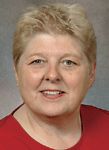- Acne
- Actinic Keratosis
- Aesthetics
- Alopecia
- Atopic Dermatitis
- Buy-and-Bill
- COVID-19
- Case-Based Roundtable
- Chronic Hand Eczema
- Chronic Spontaneous Urticaria
- Drug Watch
- Eczema
- General Dermatology
- Hidradenitis Suppurativa
- Melasma
- NP and PA
- Pediatric Dermatology
- Pigmentary Disorders
- Practice Management
- Precision Medicine and Biologics
- Prurigo Nodularis
- Psoriasis
- Psoriatic Arthritis
- Rare Disease
- Rosacea
- Skin Cancer
- Vitiligo
- Wound Care
Article
Media spin: How to benefit from exposure
A better option, says Patricia A. Clark, is to do your homework and anticipate the inevitable media requests that are bound to come your way.

A better option, says Patricia A. Clark, is to do your homework and anticipate the inevitable media requests that are bound to come your way.
"The chances of today's physician getting through his or her professional career without speaking to the media are slim to nil," Ms. Clark, a Chicago-area media consultant, comments. "You need to be prepared now. Do not wait until the news crew shows up on your doorstep to figure out what to say. Hiding under your desk is no longer an option."
Advancing the agenda
Regardless of how far-reaching the media coverage is, Ms. Clark tells physicians that, "The bottom line is to advance the agenda" for you and your practice. For each person, "agenda" means something different. Cutting through the clutter of multiple messages and defining that agenda is a big part of the preparation that must take place before an interview.
She advises clients to hone the messages of their agenda with a message box, a visual reminder of four key points to convey in an interview. One message makes up one side of the box that is drawn on paper. The message box must take into consideration the audience as well as the primary questions a reporter is likely to ask. This box is a useful, visual reminder during an interview of the four primary messages that need to be conveyed as questions are answered.
When faced with a question, Ms. Clark recommends that a physician use a bridging technique to transition from the question to one or more points on his or her agenda.
"Answer the question, neutralize it but then go ahead and use the opportunity to see if there is more information you want to share."
Take advantage of the free media exposure that news reporting provides to you, but share only relevant points; do not go overboard with too many facts or go off on a tangent, Ms. Clark advises.
But the complete opposite scenario - where the physician offers nothing more than "yes" or "no" answers - is not desirable, either.
"Many times, interviews with physicians who don't have much media training remind me of ping pong match," she says. "That's losing an opportunity to take that question and use it for your purposes too."
Newsletter
Like what you’re reading? Subscribe to Dermatology Times for weekly updates on therapies, innovations, and real-world practice tips.















